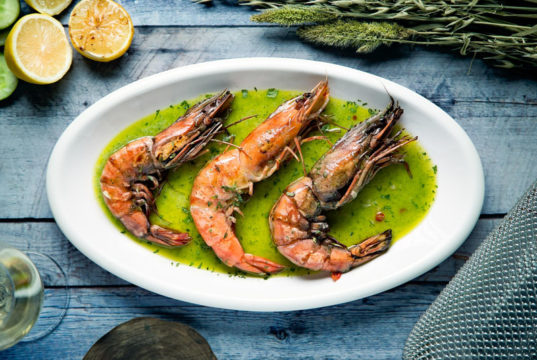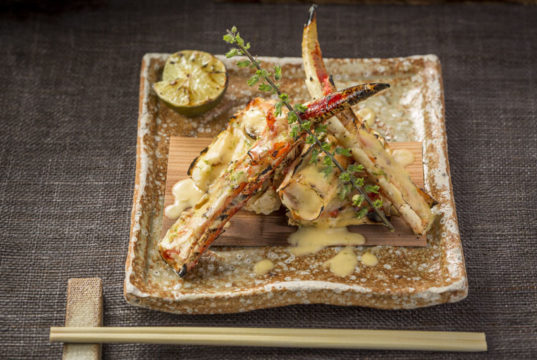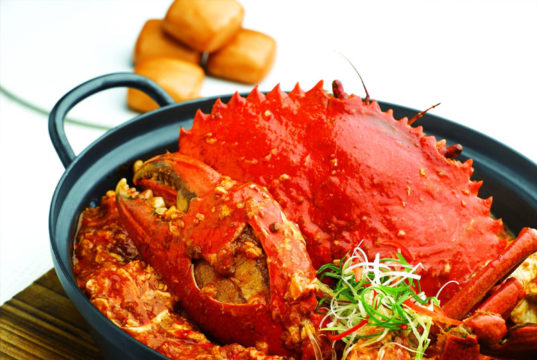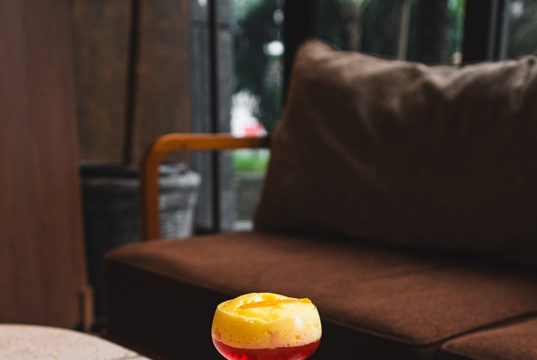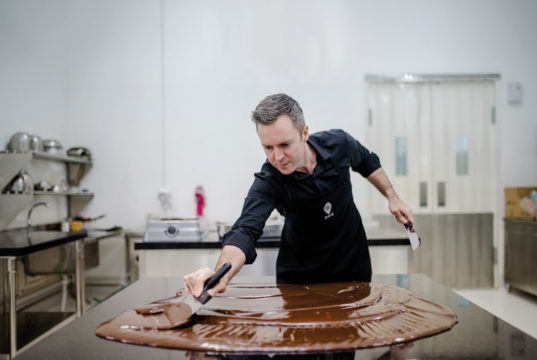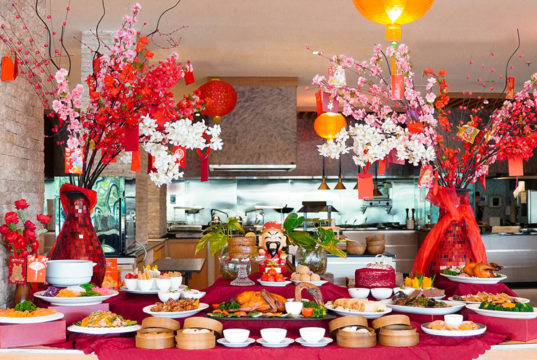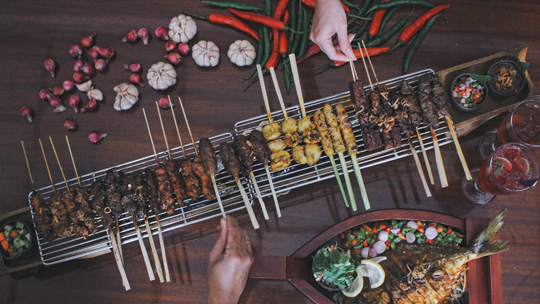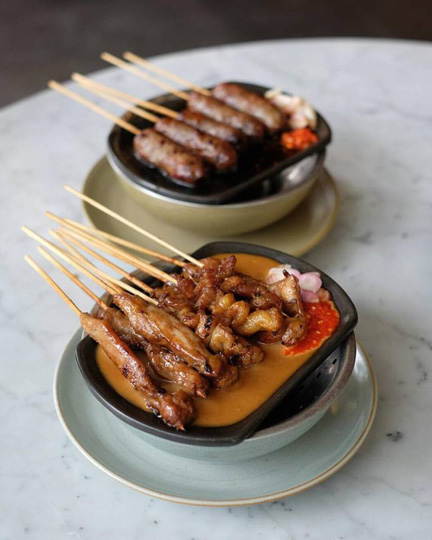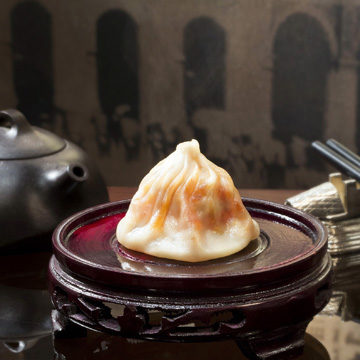Diverse and distinctive, satay or sate, depending on where you eat it, is one of Indonesia’s most popular foods. It’s claimed to have originated in Java and is widely available at restaurants and street vendors throughout the archipelago. Food historian and author of Satay, Jennifer Brennan, supports the Java claim, although she points out its true origins are most likely based on the Indian kebab brought by traders, which in turn had earlier Arabic influences both in style and ingredients. In its basic form, satay is just seasoned, skewered and grilled meat or fish pieces, served most often with a peanut sauce and sliced rice cakes called lontong or ketupat. The marinades and accompanying sauces are almost universally hot and spicy, but vary dramatically from region to region in both taste and complexity. The most popular meats are chicken, beef and goat, although some places, such as Bali, specialise in pork and minced fish.
–
Sana Sini at Pullman Jakarta Indonesia
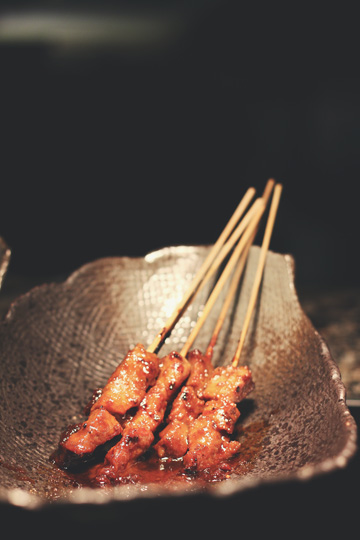
Satay is seasoned, skewered and grilled meat served with a variety of sauces, consisting of diced or sliced chicken, goat, mutton, beef or fish.
The more authentic versions use skewers from the midrib of the coconut palm frond, although bamboo skewers are just as common. The best part about satay is how it is grilled or barbecued over a wood or charcoal fire and then served with various spicy seasonings, such as peanut sauce or grated chilli and soy sauce.
Sana Sini at Pullman Jakarta Indonesia offers some of the best authentic Indonesian fare, including satay. What’s great about it is that the satays are cooked over a traditional charcoal fire, therefore preserving the fragrant sauce and adding a more authentic feel to the dish the way it’s meant to be enjoyed.
(www.pullmanjakartaindonesia.com)
–
Harum Manis
Harum Manis takes satay to another level by including a 1-metre satay as one of its signature dishes. The dish consists of various types of satay on 30 skewers on a 1-metre long suitable for four to five persons. With most of the satay highlighting flavours of Java and Bali, the complete range of satay includes wagyu ribs, maranggi beef, mbok Ayu chicken satay, kleweran satay, lamb satay, and Uni Ida Padang satay.
The impressive 1-metre satay is served on a long bamboo heater and comes with a thick peanut sauce, colo-colo sambal, Balinese sambal matah, as well as traditional pickles. Harum Manis is the perfect place to enjoy an epic take on traditional Indonesian satay amidst an intimate surrounding and cultured Javanese ambience with an elegant twist on tradition. The venue takes advantage of Indonesian heritage to enrich its interior and architectural design.
–
Sate Khas Senayan
As one of Jakarta’s longest-standing restaurant chains, Sate Khas Senayan prides itself on offering the best side of its namesake. The peanut sauce at Sate Khas Senayan is particularly distinct – it is thick, rich and carries a perfect balance between sweet and savoury. Whichever outlet of Sate Khas Senayan you visit, the flavours of satay and its sauce are consistent thanks to a dedicated team of culinary experts and an owner who constantly strives to bring out the best in Indonesian food. Aside from lamb, chickenand Balinese satay, Sate Khas Senayan is also famous for its chicken skin satay, which is very chewy and deliciously juicy, and pairs fabulously with the restaurant’s signature peanut sauce.







